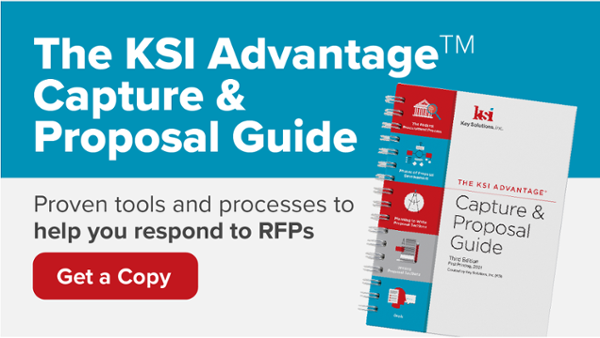In Government Proposals, experienced Proposal Managers develop a Proposal Plan to guide them through the proposal effort.
This is the second in a series of articles that discusses Part two of the planning process, RFP Analysis.
The Plan addresses and guides proposal activities at six major points in the proposal process:- Understanding the Requirements
- RFP Analysis
- Win Strategy
- Proposal Logistics
- Proposal Writing
- Color Team Reviews
During Part 2, RFP Analysis, the final RFP (or perhaps one or more versions of a draft RFP) has been released by the Government.
The Proposal Manager, along with the proposal team, conducts a thorough read-through of the RFP to understand the requirements for bidding the work, and to determine if there are any “show stoppers" (i.e., reasons why the team should elect not to bid).
Some examples of reasons not to bid may include the inability of the team to collectively meet RFP technical requirements, lack of past performance relating to the RFP scope of work, and/or lack of key personnel possessing required technical certifications, education, and experience. The team may also subsequently decide, after thorough review, that there are inherent business risks in bidding that the team may be unwilling to assume, based on specific language contained in the RFP.
Once the decision is made to bid the work, the Proposal Manager completes a detailed, annotated proposal outline that serves as the guide for the proposal team to follow in developing the proposal.
This outline is structured to comply with all proposal instructions (Section L, Instructions to Offerors), identify which elements of the proposal will be scored and how they will be scored (Section M, Evaluation Factors for Award), and integrate the requirements of the Statement of Work (SOW) or Performance Work Statement (PWS).
The outline also identifies requirements contained in other RFP sections that must be addressed, including, for example, personnel security clearances and other security requirements, lists of key personnel and required qualifications, and the list of reports and other contract deliverables.
The annotated outline also captures the relevant RFP language from Sections L, M, and often Section C, so that no RFP requirements are overlooked. Once the detailed, annotated outline is completed, the Proposal Manager develops a summary outline highlighting the major proposal sections and subsections to be used as a reference.
The Proposal Manager also develops an Evaluation Factors Scoring Tree that establishes the point value (either specifically or notionally, based on the wording in Section M) of the proposal sections that are to be evaluated in relationship to each other, in order to ensure that the proposal developed from the outline is structured to score the maximum number of evaluation points.
Another important reason for the RFP analysis is to determine whether any of the RFP language is ambiguous, contradictory, or even missing, and whether additional information or clarification is necessary for bidders to submit a complete, compliant proposal.
As the team reads through the document, each member drafts proposed questions for the Government, which are captured in a single document by the Proposal Manager. Select members of the proposal/capture team review the list of questions for the Government to make sure that the questions submitted are structured in such a way as to elicit the desired response while eliminating any editorial content that could inadvertently provide information to others about the team’s capabilities and strategies that could be exploited by others. Questions are submitted to the Government by the due date as specified by the RFP requirements.
Once the RFP analysis is complete, the Proposal Manager uses this information, along with the team’s documented Win Strategy, to develop proposal Work Packages for writers in order to begin drafting the proposal response.
TAKEAWAY:
Has your company ever lost work that it was qualified to perform because something was missing from your proposal or because the RFP requirements were misunderstood? If so, adherence to these “best practices” when bidding important work is something your capture and proposal teams should seriously consider.
Read: HOW TO DEVELOP A PROPOSAL PLAN, PART 3: WIN STRATEGY









